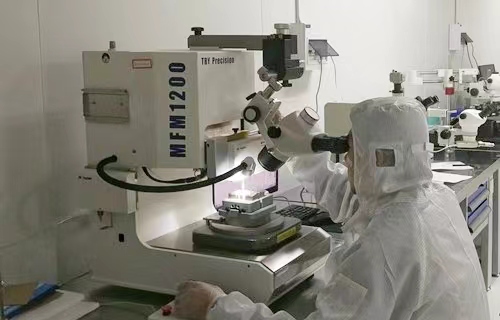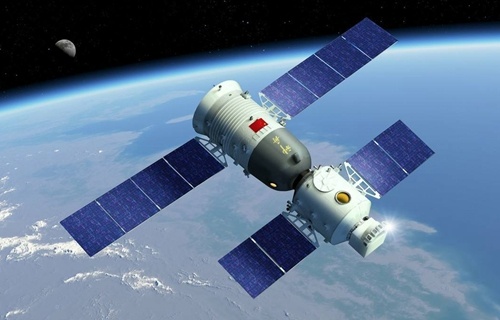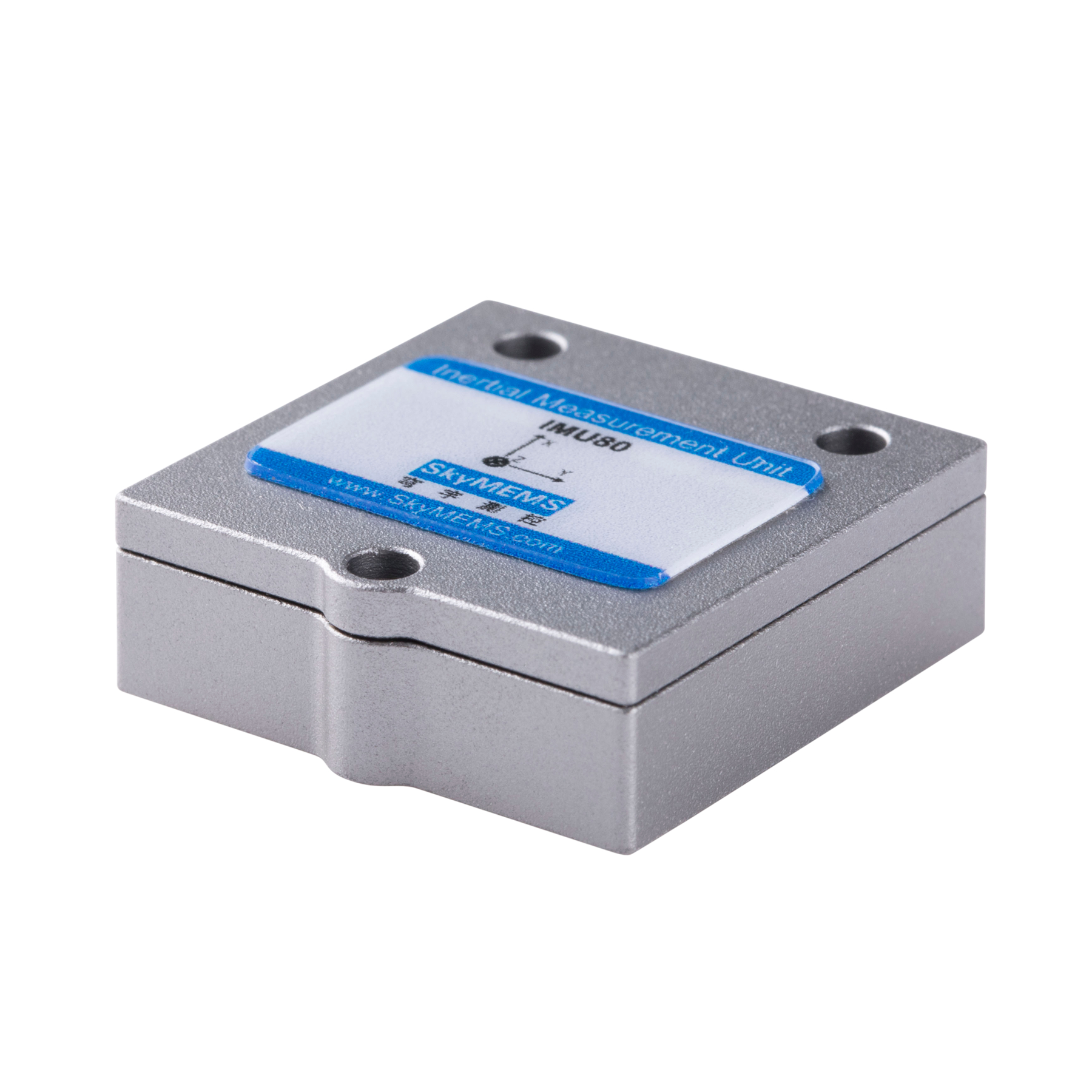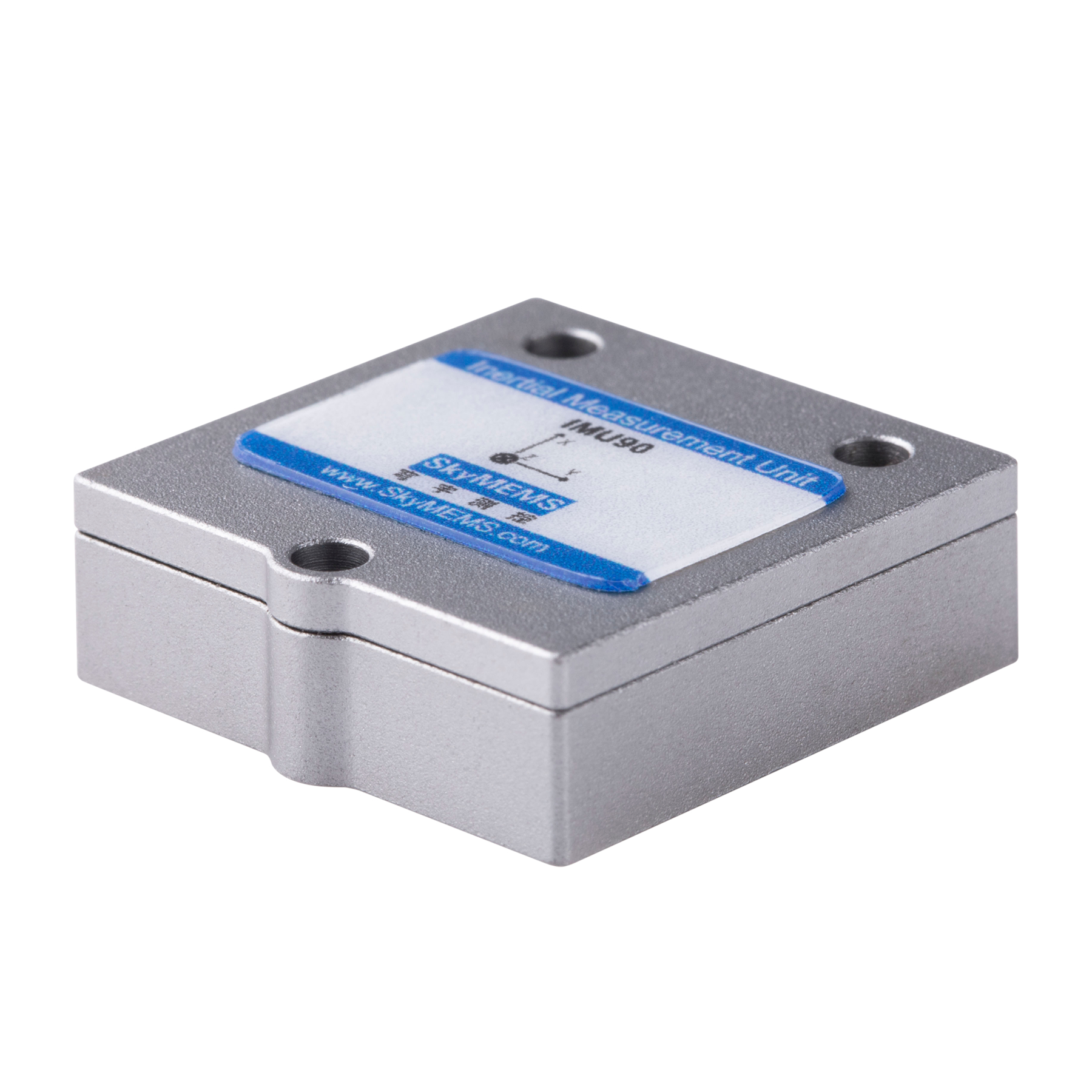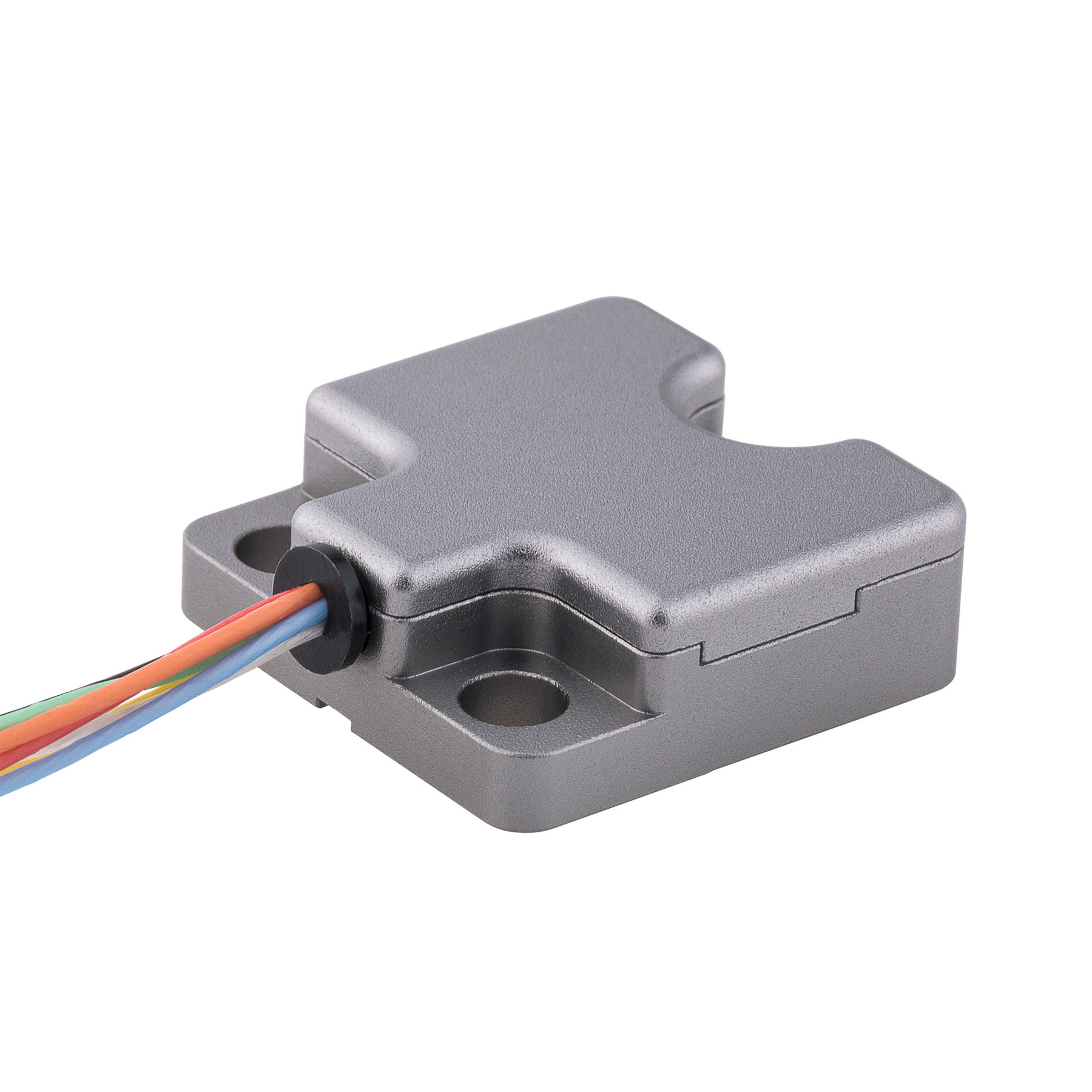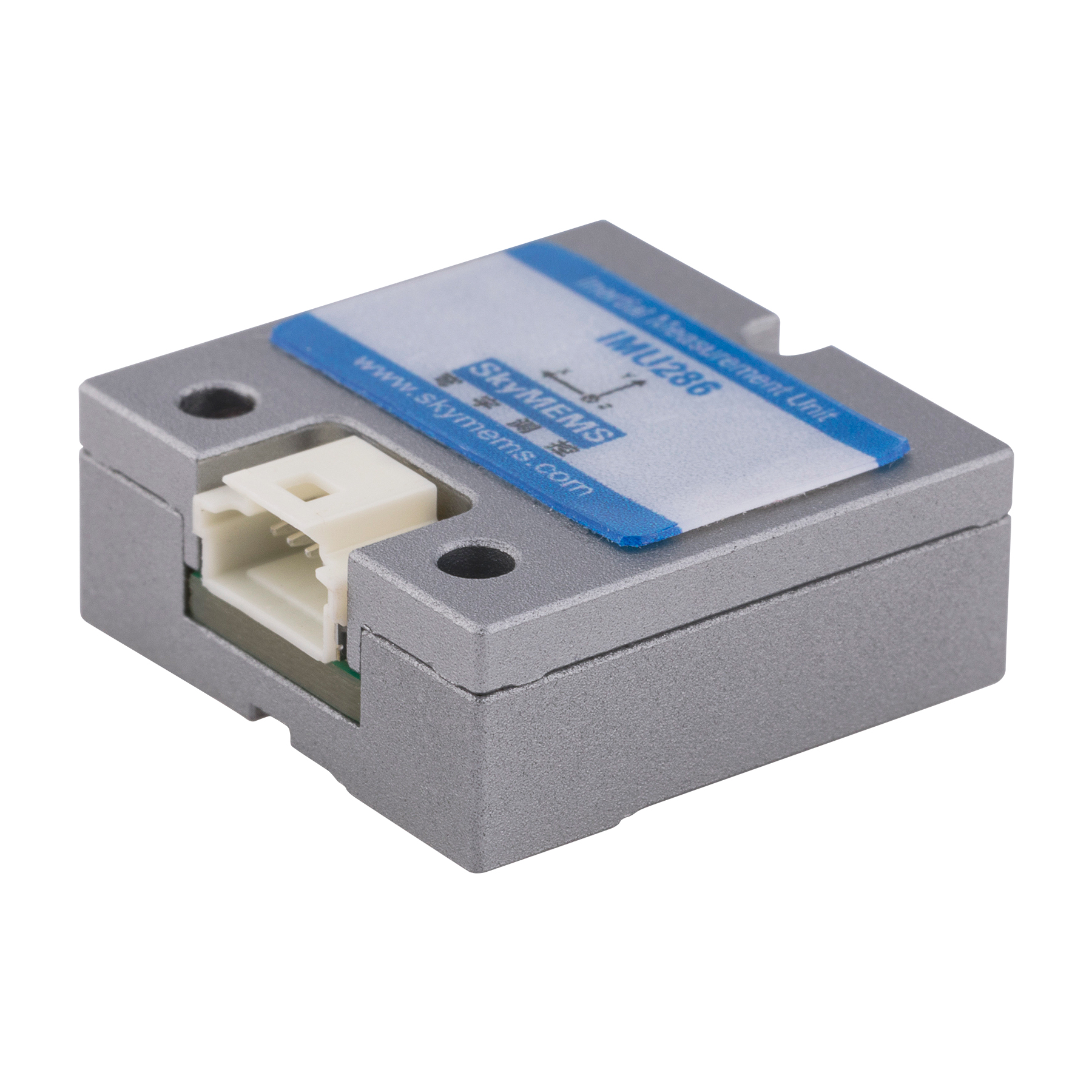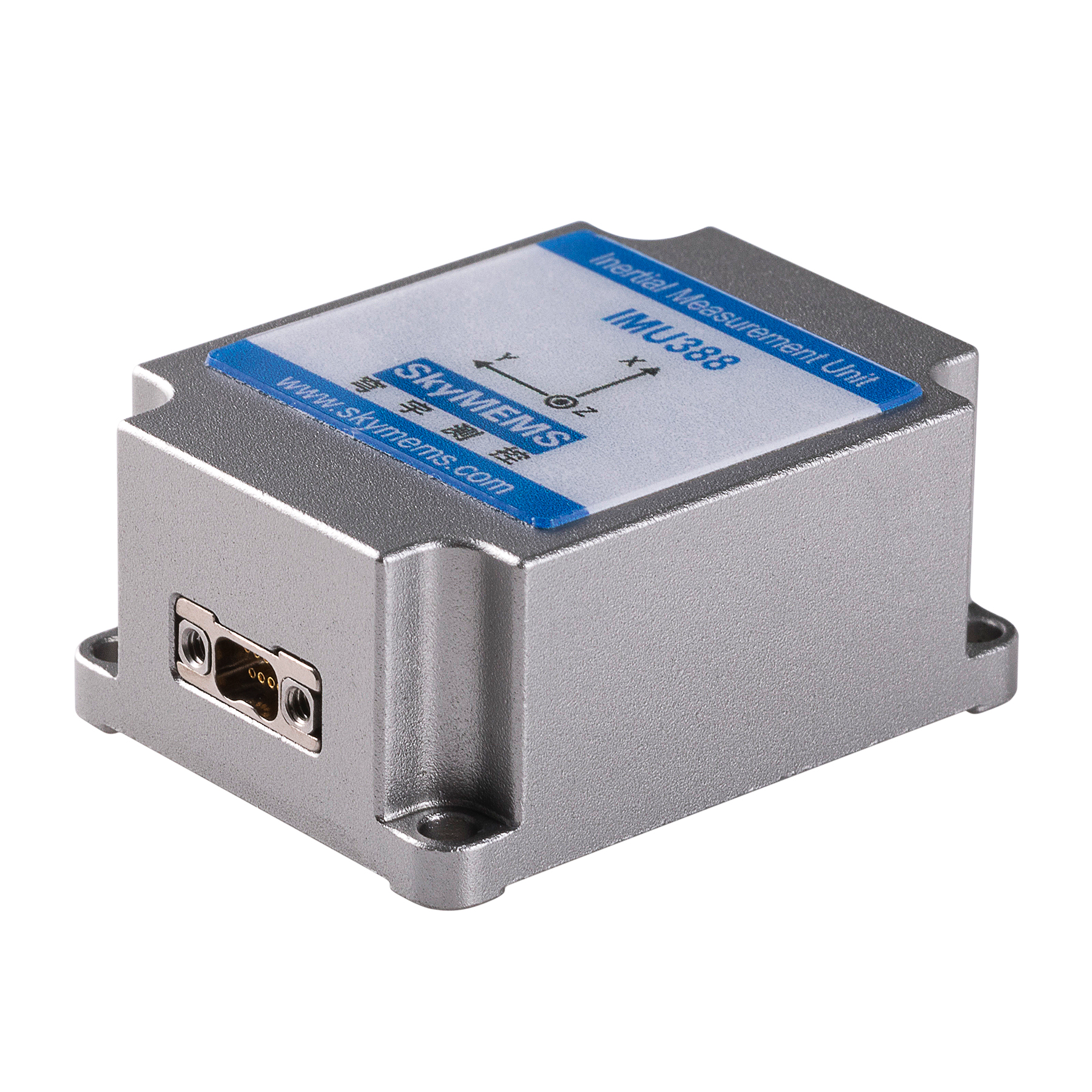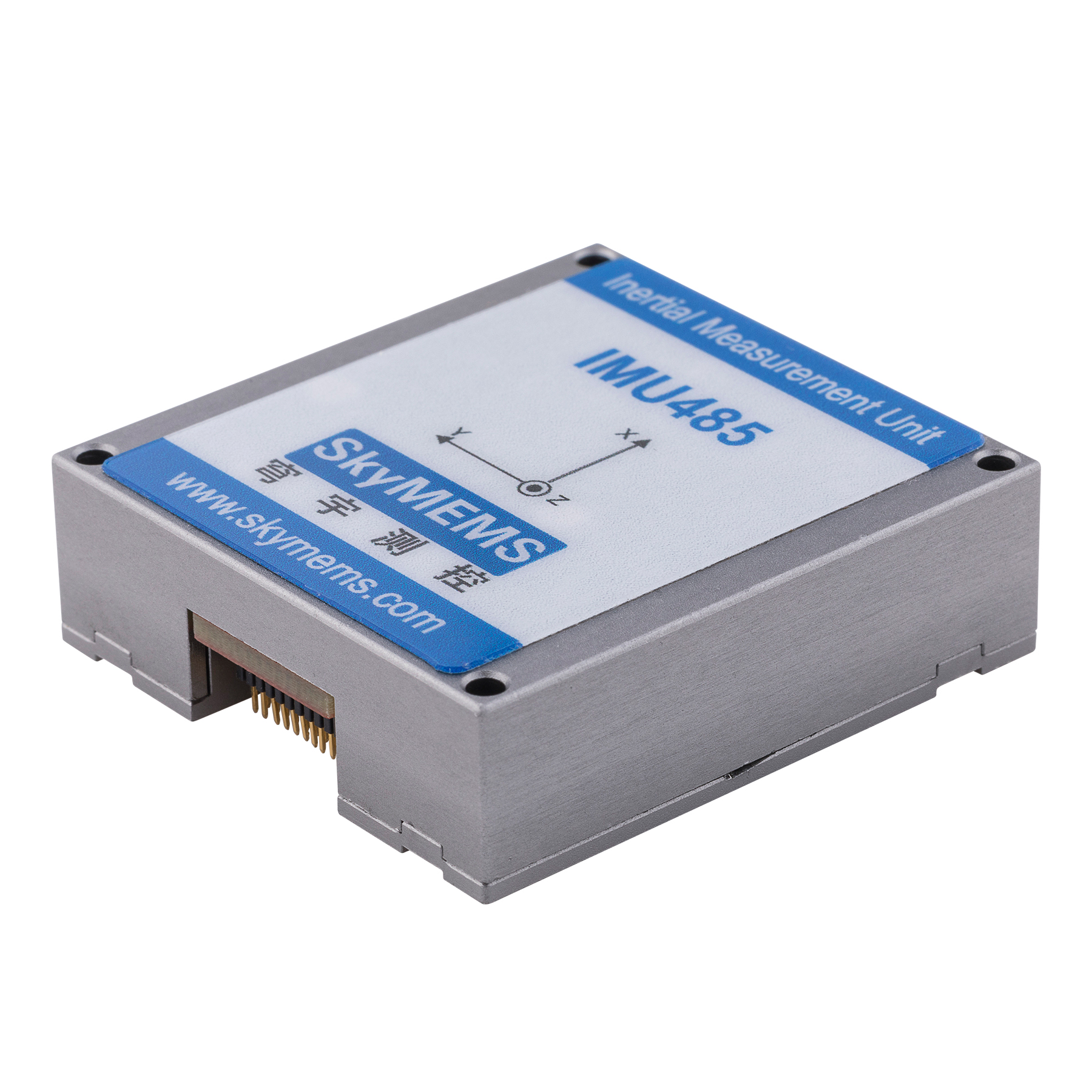Mit der rasanten Entwicklung von Wissenschaft und Technik entstehen ständig neue fortschrittliche Technologien und Geräte, die unser Leben und unsere Arbeit erheblich erleichtern. Unter den vielen wissenschaftlichen und technologischen Konzepten tauchen IMU (Inertial Measurement Unit) und MEMS (Micro Electro Mechanical System) häufig in den Köpfen der Menschen auf. Sie spielen eine Schlüsselrolle in vielen Bereichen wie der Luft- und Raumfahrt, dem autonomen Fahren und intelligenten Wearables. Für viele Menschen ist der Unterschied zwischen den beiden jedoch nicht ganz klar. Als Nächstes wollen wir die Geheimnisse von IMU und MEMS ergründen und ihren mysteriösen Schleier lüften.
Was ist IMU?
IMU (Inertial Measurement Unit) ist ein wichtiges Gerät, das den dreiachsigen Lagewinkel (oder die Winkelgeschwindigkeit) und die Beschleunigung eines Objekts genau messen kann. Sie ist wie ein scharfer Wahrnehmer, der die Informationen über den Bewegungszustand eines Objekts im dreidimensionalen Raum in Echtzeit erfasst. Sein Funktionsprinzip basiert auf den Newtonschen Bewegungsgesetzen und dem Drehimpulserhaltungssatz, und die Messung der Bewegungsparameter des Objekts wird durch den intern integrierten Beschleunigungsmesser und das Gyroskop erreicht. Der Beschleunigungsmesser ist wie eine empfindliche Waage, die die Beschleunigungssignale des Objekts in den drei unabhängigen Achsen des Trägerkoordinatensystems erfassen kann, so dass wir wissen, wie schnell sich die Geschwindigkeit des Objekts in alle Richtungen ändert; während das Gyroskop wie ein präziser Kompass ist, der zur Messung des Winkelgeschwindigkeitssignals des Trägers relativ zum Navigationskoordinatensystem verwendet wird und uns hilft, die Geschwindigkeit und Richtung der Rotation des Objekts zu bestimmen. Anhand dieser Messdaten kann die IMU die Lage des Objekts im Raum genau berechnen und liefert damit wichtige Basisinformationen für die anschließende Bewegungssteuerung und Navigation.
In praktischen Anwendungen enthalten die meisten IMUs drei Beschleunigungsmesser und drei Ein-Grad-Gyroskope, die sorgfältig auf drei orthogonalen empfindlichen Achsen installiert sind. Durch diese ausgeklügelte Anordnung ist die IMU in der Lage, den Bewegungszustand des Objekts rundum und hochpräzise zu erfassen. In der Luft- und Raumfahrt beispielsweise ist die IMU das Herzstück des Navigations- und Kontrollsystems eines Flugzeugs. Sie ist so etwas wie das "Gehirn" des Flugzeugs, das jederzeit die Lage- und Beschleunigungsänderungen des Flugzeugs erfasst, dem Piloten genaue Fluginformationen liefert und dafür sorgt, dass das Flugzeug sicher und stabil durch den weiten Himmel fliegt. In selbstfahrenden Autos beispielsweise arbeitet die IMU eng mit anderen Sensoren zusammen, sozusagen als "Augen" und "Ohren" des Fahrzeugs. Sie überwacht den Fahrzustand des Fahrzeugs in Echtzeit, unterstützt das Fahrzeug bei der präzisen Navigation und stabilen Fahrkontrolle und begleitet die Fahrt der Menschen.
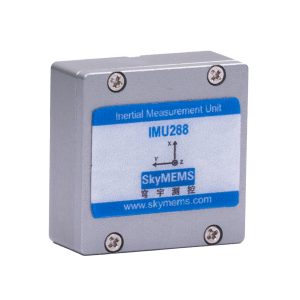
Was ist MEMS?
MEMS (Micro-Electro-Mechanical System) ist ein Mikrogerät oder -system, das eine Vielzahl fortschrittlicher Technologien integriert und als ein Meisterwerk der modernen Wissenschaft und Technologie bezeichnet werden kann. Seine Größe beträgt in der Regel einige Millimeter oder sogar weniger, und seine innere Struktur ist so fein wie Mikrometer oder sogar Nanometer, wie ein Präzisionsinstrument in einer mikroskopischen Welt. MEMS integrieren mehrere Funktionen wie Mikrosensoren, Mikroaktuatoren, mikromechanische Strukturen, Mikrostromquellen, Mikroenergie, Signalverarbeitungs- und Steuerschaltungen, hochleistungsfähige integrierte elektronische Geräte, Schnittstellen, Kommunikation usw. Es handelt sich um ein hochintegriertes, unabhängiges intelligentes System.
Die Entstehung von MEMS ist untrennbar mit der gegenseitigen Integration und gemeinsamen Innovation vieler Disziplinen wie Physik, Halbleiter, Optik, Elektronik, Chemie, Werkstofftechnik, Maschinenbau, Medizin, Informationstechnik und Biotechnik verbunden. Als Hauptstrukturmaterial wird Silizium verwendet, aber auch Silizid, Metall, Legierungen und einige polymere Materialien werden geschickt eingesetzt. Durch eine Reihe komplexer und hochentwickelter Technologien wie Lithografie, Korrosion, Dünnfilm, LIGA, Silizium-Mikrobearbeitung, Nicht-Silizium-Mikrobearbeitung und Präzisionsbearbeitung werden winzige mechanische Strukturen und elektronische Komponenten perfekt auf einem winzigen Chip integriert, wodurch Mikrogeräte mit verschiedenen einzigartigen Funktionen entstehen.
Es gibt verschiedene Arten von MEMS-Sensoren, die je nach ihrem Funktionsprinzip grob in drei Kategorien eingeteilt werden können: physikalische, chemische und biologische. Nach ihren technischen Prinzipien lassen sie sich weiter in vier Kategorien unterteilen: sensorische MEMS, biologische MEMS, optische MEMS und Hochfrequenz-MEMS. Gängige MEMS-Produkte sind schillernd: MEMS-Beschleunigungsmesser, MEMS-Mikrofone, Mikromotoren, Mikropumpen, Mikrovibratoren, optische MEMS-Sensoren, MEMS-Drucksensoren, MEMS-Feuchtigkeitssensoren, MEMS-Gassensoren usw. und ihre integrierten Produkte. Diese kleinen und feinen MEMS-Bauteile spielen eine unverzichtbare und wichtige Rolle in vielen Bereichen wie Unterhaltungselektronik, Medizin, Automobilbau, Industrieautomatisierung und Umweltüberwachung, da sie viele Vorteile wie geringe Größe, geringes Gewicht, niedrigen Stromverbrauch, hohe Zuverlässigkeit, niedrige Kosten und Massenproduktion bieten. In Smartphones beispielsweise ermöglichen uns MEMS-Beschleunigungsmesser und -Gyroskope eine Vielzahl von somatosensorischen Spielen, die unser Leben mit endlosem Spaß bereichern. Im medizinischen Bereich können MEMS-Sensoren zur medizinischen Überwachung und Diagnose eingesetzt werden, z. B. zur Überwachung des Blutzuckerspiegels, der Herzfrequenz usw., um Ärzten genaue Krankheitsdaten zur Verfügung zu stellen und Patienten zu helfen, ihre Gesundheit besser zu verwalten.
Technische Grundsatzanalyse
- MEMS Technisches Prinzip
Die Kerntechnologie der MEMS besteht darin, Mikroelektronik und Mikrobearbeitungstechnik zu nutzen, um Mikrosensoren, Mikroaktuatoren, mikromechanische Strukturen sowie Signalverarbeitungs- und Steuerschaltungen auf einem winzigen Chip zu integrieren. Nehmen wir als Beispiel einen MEMS-Beschleunigungsmesser. Er enthält in der Regel einen beweglichen Massenblock und eine elastische Stützstruktur. Wenn eine Beschleunigung auftritt, wird der Massenblock aufgrund seiner Trägheit eine Verschiebung erzeugen. Durch die Erfassung der Änderung der Kapazität, des Widerstands oder des piezoelektrischen Effekts zwischen dem Massenblock und der festen Elektrode kann die Beschleunigung in ein elektrisches Ausgangssignal umgewandelt werden. Ein weiteres Beispiel ist ein MEMS-Mikrofon, das die Vibration der Folie nutzt, um Schallsignale in elektrische Signale umzuwandeln. Der Film und die Rückplatte bilden eine Kondensatorstruktur. Durch den Schall wird die Folie in Schwingung versetzt, was wiederum den Kapazitätswert verändert und eine Umwandlung von Schall in elektrische Signale bewirkt. - Technisches Prinzip der IMU
IMU verwendet hauptsächlich Beschleunigungsmesser und Gyroskope, um die Beschleunigung und die Winkelgeschwindigkeit eines Objekts zu messen und dann die Haltung, die Geschwindigkeit, die Verschiebung und andere Informationen des Objekts zu berechnen. Basierend auf Newtons zweitem Gesetz misst der Beschleunigungsmesser die Beschleunigung, indem er die vom Massenblock unter der Wirkung der Beschleunigung erzeugte Kraft erfasst; das Gyroskop nutzt den Grundsatz der Drehimpulserhaltung, um die Drehgeschwindigkeit zu messen, indem es die Änderung des Drehimpulses des rotierenden Teils erfasst. In praktischen Anwendungen werden bei IMU in der Regel die Daten von Beschleunigungsmessern und Gyroskopen zusammengeführt. Bei der Berechnung der Lage eines Objekts zum Beispiel kann das Gyroskop schnell auf Winkeländerungen reagieren, aber es gibt einen Driftfehler; der Beschleunigungsmesser kann relativ genaue Informationen über die Richtung der Schwerkraft liefern, wird aber leicht durch externe Vibrationen gestört. Durch komplementäre Filterung, Kalman-Filterung und andere Algorithmen können die Vorteile beider Systeme kombiniert werden, um eine genauere Schätzung der Lage zu erhalten. - Vergleichende Unterschiede
Vom Grundprinzip her konzentriert sich MEMS auf die Konstruktion von mikroelektromechanischen Systemen und erfasst physikalische Größen mit Hilfe verschiedener empfindlicher Komponenten und wandelt sie in elektrische Signale um. Es deckt ein breites Spektrum ab, einschließlich verschiedener Arten von Sensoren und Aktoren, während IMU sich auf die Messung von physikalischen Trägheitsgrößen konzentriert. Im Kern geht es um die Verwendung von Beschleunigungsmessern und Gyroskopen, um die Bewegungsinformationen von Objekten zu erhalten, die hauptsächlich zur Bestimmung der Lage und des Bewegungszustands von Objekten verwendet werden. Die MEMS-Technologie ist ein wichtiges Mittel, um die Miniaturisierung und Integration von IMU zu erreichen. Viele IMUs werden auf der Grundlage der MEMS-Technologie hergestellt, aber MEMS ist nicht auf den IMU-Bereich beschränkt, sondern hat auch eine breite Palette von Anwendungen in vielen anderen Bereichen.
Die strukturelle Zusammensetzung ist sehr unterschiedlich
- Strukturelle Merkmale von MEMS
MEMS bestehen in der Regel aus mehreren Teilen, wie mikroelektromechanischen Sensoren, mikroelektromechanischen Aktoren, mikromechanischen Strukturen, Signalverarbeitung und Steuerschaltungen. Ein gewöhnlicher MEMS-Beschleunigungssensor enthält in der Regel einen beweglichen Massenblock, eine elastische Trägerstruktur und eine Kondensatorplatte oder ein piezoresistives Element zur Erfassung der Verschiebung des Massenblocks. Der Massenblock ist im Inneren des Chips über eine elastische Stützstruktur aufgehängt. Bei einer Beschleunigung wird der Massenblock aufgrund seiner Trägheit verschoben, wodurch sich der Abstand zwischen den Kondensatorplatten oder der Widerstandswert des piezoresistiven Elements ändert, um die Beschleunigung zu erfassen. Ein weiteres Beispiel ist ein MEMS-Mikrofon, das hauptsächlich aus einer Schwingungsmembran, einer Rückplatte und einer Trägerstruktur besteht. Die Schwingungsmembran und die Rückplatte bilden eine Kondensatorstruktur. Der Schall bringt die Schwingungsmembran zum Schwingen, wodurch sich der Kapazitätswert ändert und das Schallsignal in ein elektrisches Signal umgewandelt wird. Darüber hinaus können MEMS auch Mikroprozessoren, Kommunikationsschnittstellen usw. integrieren, um komplexere Funktionen und Datenübertragungen zu ermöglichen. - Strukturelle Komponenten der IMU
Die IMU umfasst in der Regel einen Drei-Achsen-Beschleunigungsmesser und ein Drei-Achsen-Gyroskop. Einige High-End-IMUs enthalten auch Komponenten wie ein Drei-Achsen-Magnetometer. Der Drei-Achsen-Beschleunigungsmesser wird verwendet, um die Beschleunigung eines Objekts in drei orthogonalen Richtungen zu messen. Er basiert auf dem zweiten Newton'schen Gesetz und misst die vom Massenblock unter der Wirkung der Beschleunigung erzeugte Kraft. Das Drei-Achsen-Gyroskop wird zur Messung der Winkelgeschwindigkeit eines Objekts um drei orthogonale Achsen verwendet. Es nutzt den Grundsatz der Drehimpulserhaltung, um Informationen über die Drehgeschwindigkeit zu erhalten, indem es die Änderung des Drehimpulses der rotierenden Teile erfasst. Das dreiachsige Magnetometer wird zur Messung der Stärke des Erdmagnetfelds verwendet, um den Kurswinkel des Objekts zu bestimmen. Diese Sensoren arbeiten eng zusammen, um die gemessene Beschleunigung, Winkelgeschwindigkeit, Magnetfeldstärke und andere Daten an den Mikroprozessor zu übermitteln. Nach der Datenfusion und -verarbeitung werden die Lage, die Geschwindigkeit, die Verschiebung und andere Informationen des Objekts berechnet. - Vergleich der strukturellen Unterschiede
Strukturell gesehen haben MEMS vielfältige Strukturen, da sie viele verschiedene Arten von Sensoren und Aktoren umfassen. Jedes MEMS-Gerät hat seine eigene Struktur, um spezifische funktionale Anforderungen zu erfüllen. Das strukturelle Design und der Herstellungsprozess variieren je nach Anwendungsszenario und sind sehr flexibel. Die Struktur der IMU ist relativ fest und konzentriert sich hauptsächlich auf die Kernanforderungen der Trägheitsmessung, mit dreiachsigen Beschleunigungssensoren und dreiachsigen Gyroskopen als Basiskomponenten und einigen zusätzlichen dreiachsigen Magnetometern. Diese relativ feste Struktur ermöglicht es, sich auf die Trägheitsmessung zu konzentrieren und stabile und zuverlässige Daten für die Überwachung des Bewegungszustands des Objekts zu liefern.
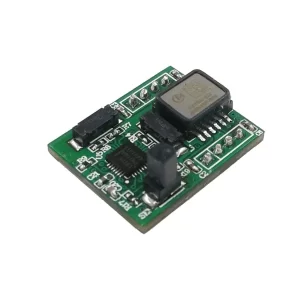
Ein Überblick über die Anwendungsbereiche
Breite Anwendung von MEMS
- MEMS haben mit ihren einzigartigen Vorteilen ein großes Anwendungspotenzial in vielen Bereichen gezeigt. Im medizinischen Bereich werden MEMS-Beschleunigungsmesser innovativ für die nicht-invasive Erkennung der fötalen Herzfrequenz eingesetzt. Herkömmliche Methoden zur Erkennung der fetalen Herzfrequenz haben viele Einschränkungen, wie z. B. ungenaue Stethoskop-Zählungen und teure und potenziell riskante Ultraschall-Doppler-Monitore für die fetale Herzfrequenz. Die nicht-invasive Methode zur Erkennung der fetalen Herzfrequenz auf der Grundlage von MEMS-Beschleunigungsmessern hat einen Durchbruch gebracht. Sie kann die fetale Herzfrequenz in ein analoges Spannungssignal umwandeln und gibt nach einer Reihe präziser Signalverarbeitungen schließlich genaue Messergebnisse aus, die schwangeren Frauen eine einfache, intuitive und sichere Methode zur Selbstuntersuchung bieten.
- Im Automobilbereich sind MEMS-Sensoren allgegenwärtig und spielen eine wichtige Rolle. MEMS-Drucksensoren sind in vielen wichtigen Teilen weit verbreitet, z. B. TPMS-Drucksensoren, die den Reifendruck in Echtzeit überwachen, um die Fahrsicherheit zu gewährleisten; Ansaugkrümmer-Drucksensoren messen genau die absoluten Druckänderungen im Ansaugkrümmer entsprechend dem Lastzustand des Motors und wandeln sie in Spannungssignale um, die zusammen mit dem Drehzahlsignal dem elektronischen Motorsteuergerät die wichtigste Grundlage für die Bestimmung der grundlegenden Einspritzmenge der Einspritzdüse liefern, wodurch die Motorleistung effektiv verbessert, der Kraftstoffverbrauch verringert und die Abgasemissionen reduziert werden; Motoröldrucksensoren können den Öldruck genau messen, um den normalen Betrieb von Motorschmierung, Kühlung und anderen Funktionen zu gewährleisten, und ihre Zuverlässigkeit steht in direktem Zusammenhang mit der Sicherheit des Fahrzeugs und des Fahrers. Darüber hinaus spielen MEMS-Beschleunigungsmesser und -Gyroskope auch eine wichtige Rolle im Antiblockiersystem (ABS), im elektronischen Stabilitätsprogramm (ESP) und in anderen Sicherheitssystemen von Kraftfahrzeugen, die dazu beitragen, die Stabilität des Fahrzeugs während der Fahrt zu erhalten und Unfälle zu vermeiden.
- Im Bereich der Kommunikation sind optische MEMS-Schalter und -Modulatoren Schlüsselkomponenten für die effiziente Verarbeitung und Übertragung optischer Signale. Optische MEMS-Schalter können durch die geschickte Bewegung von mikromechanischen Strukturen Funktionen wie schnelles Schalten, Modulieren und Filtern von optischen Pfaden erreichen. Sie haben bedeutende Vorteile wie geringe Größe, niedriger Stromverbrauch und schnelle Reaktionsgeschwindigkeit. Sie werden häufig in optischen Kommunikationsnetzen eingesetzt, um Kernfunktionen wie das Schalten, Weiterleiten und Querverbinden von optischen Signalen zu ermöglichen und so die Flexibilität und Zuverlässigkeit von Kommunikationssystemen erheblich zu verbessern; MEMS-Modulatoren modulieren präzise die Phase, Amplitude, Polarisation und andere Eigenschaften von optischen Signalen, indem sie die Länge oder den Brechungsindex des optischen Pfades ändern. Sie sind ein unverzichtbarer und wichtiger Bestandteil der optischen Kommunikation, der optischen Signalverarbeitung und anderer Bereiche.
Die wichtigsten Anwendungsszenarien von IMU
- Die IMU spielt eine zentrale Rolle in Bereichen mit extrem hohen Anforderungen an die Bewegungs- und Lagewahrnehmung. In der Luft- und Raumfahrt ist sie das Herzstück von Flugzeugnavigations- und -steuerungssystemen. Sie versorgt Flugzeuge mit genauen Informationen über Lage, Geschwindigkeit und Position, um sicherzustellen, dass sie in komplexen Flugumgebungen sicher und stabil fliegen können. Ganz gleich, ob es sich um ein Flugzeug handelt, das in der Atmosphäre kreist, oder um einen Satelliten, der im weiten Weltall kreist, die IMU überwacht und korrigiert die Auswirkungen verschiedener Faktoren auf den Flugstatus in Echtzeit, so dass das Flugzeug die vorgegebene Route genau einhalten und verschiedene komplexe Aufgaben erfüllen kann.
- Auch im Bereich der Drohnen spielt die IMU eine unersetzliche Rolle. Sie kann Schlüsselfunktionen wie den automatischen Schwebeflug, die Routenplanung und die präzise Lageregelung von Drohnen realisieren. Wenn eine Drohne Aufgaben in der Luft ausführt, ist die IMU so etwas wie ihr "Gehirn". Sie erfasst jederzeit ihren eigenen Bewegungszustand und ihre Lageänderungen und passt die Flugparameter entsprechend dieser Informationen rechtzeitig an, um sicherzustellen, dass die Drohne stabil fliegen und verschiedene Aufgaben wie Luftaufnahmen, Logistikverteilung und Kartierung erfüllen kann.
- Im Bereich der autonomen Fahrzeuge arbeitet die IMU eng mit anderen Sensoren wie Lidar und Kameras zusammen, um Fahrzeuge mit genauen Positions- und Lageinformationen zu versorgen. In komplexen und sich verändernden Verkehrsumgebungen kann die IMU autonomen Fahrzeugen dabei helfen, einen stabilen Fahrzustand aufrechtzuerhalten und rechtzeitig und präzise auf verschiedene Notfälle zu reagieren, wie z. B. das Ausweichen vor Hindernissen und Notbremsungen, was einen soliden Schutz für die Reisesicherheit der Passagiere bietet.
- Im Bereich der Roboter, insbesondere der Industrieroboter, liefert die IMU wichtige Daten für deren Bewegungssteuerung und Navigation. Mit Hilfe der IMU können Roboter ihren eigenen Bewegungszustand und ihre Position genau erfassen und so komplexe Funktionen wie autonomes Gehen und flexible Hindernisvermeidung realisieren. In industriellen Produktionslinien können hochpräzise IMUs sicherstellen, dass Roboter verschiedene Betriebsaufgaben genau ausführen können, was die Produktionseffizienz und die Produktqualität verbessert.
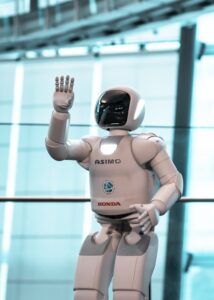
Eingehende Diskussion der Vor- und Nachteile
Vorteile und Grenzen von MEMS
Die MEMS-Technologie hat aufgrund ihrer einzigartigen Eigenschaften in vielen Bereichen erhebliche Vorteile gezeigt. Erstens sind MEMS-Bauteile ultraklein und extrem leicht, so dass sie leicht in verschiedene miniaturisierte Geräte integriert werden können, was die Entwicklung leichter und tragbarer moderner Elektronikprodukte stark unterstützt. In Smartphones beispielsweise lassen sich MEMS-Beschleunigungsmesser und -Gyroskope aufgrund ihrer winzigen Größe geschickt in den kleinen Raum des Mobiltelefons integrieren und bieten dem Benutzer ein reichhaltiges somatosensorisches interaktives Erlebnis, wie z. B. automatische Bildschirmdrehung, Schrittzählung und andere Funktionen. Zweitens haben MEMS-Bauteile einen extrem niedrigen Stromverbrauch, was die Batterielebensdauer von batteriebetriebenen Geräten erheblich verlängert. Am Beispiel von Smartwatches zeigt sich, dass die MEMS-Sensoren aufgrund ihres geringen Stromverbrauchs in der Lage sind, die Bewegung, die Herzfrequenz und andere Daten des Benutzers über einen langen Zeitraum zu überwachen, ohne dass sie häufig aufgeladen werden müssen, was für den Benutzer sehr praktisch ist. Darüber hinaus haben MEMS-Bauteile den Vorteil, dass sie schnell reagieren und Veränderungen in externen physikalischen Größen schnell erfassen und umsetzen können. Im Airbag-Auslösesystem eines Autos kann der MEMS-Beschleunigungsmesser das Aufprallsignal des Fahrzeugs in sehr kurzer Zeit erkennen, den Airbag rechtzeitig auslösen und das Leben von Fahrer und Insassen wirksam schützen.
MEMS hat jedoch auch einige Einschränkungen. Aufgrund ihrer winzigen Struktur ist die Antistörfähigkeit von MEMS-Geräten in einer komplexen Arbeitsumgebung relativ schwach. In einer Umgebung mit starken elektromagnetischen Störungen kann die Messgenauigkeit von MEMS-Sensoren stark beeinträchtigt werden, was zu Abweichungen bei den Ausgabedaten führt. Darüber hinaus unterscheidet sich die Genauigkeit von MEMS-Sensoren immer noch etwas von der herkömmlicher Sensoren. In Bereichen wie der industriellen Messtechnik und der wissenschaftlichen Forschung, die eine extrem hohe Messgenauigkeit erfordern, können MEMS-Sensoren diese Anforderungen möglicherweise nicht erfüllen. Gleichzeitig ist der Herstellungsprozess von MEMS-Bauteilen komplex und stellt strenge Anforderungen an die Produktionsumgebung und -ausrüstung, was die Produktionskosten bis zu einem gewissen Grad erhöht und die breite Anwendung in einigen kostensensiblen Anwendungsszenarien einschränkt.
Stärken und Schwächen der IMU
Die IMU spielt eine unersetzliche und wichtige Rolle auf dem Gebiet der Inertialmessung, und ihre Stärken sind sehr ausgeprägt. Die IMU kann hochfrequente Messdaten liefern, wodurch sie in Anwendungen mit extrem hohen Anforderungen an die Erkennung von Änderungen des Bewegungszustands gut funktioniert. Während des Fluges der Drohne kann die IMU die Lageänderungen der Drohne in Echtzeit erfassen und schnell genaue Lageinformationen für das Flugsteuerungssystem liefern, wodurch sichergestellt wird, dass die Drohne stabil und flexibel fliegen kann. Die IMU hat eine hohe Autonomie. Sie kann den Bewegungszustand eines Objekts unabhängig messen, ohne auf externe Referenzsignale angewiesen zu sein. Wenn das Satellitennavigationssignal blockiert oder gestört wird, wie z. B. in Häuserschluchten und Innenräumen, kann sich die IMU auf ihre Trägheitsmessfunktion verlassen, um kontinuierlich zuverlässige Positions- und Lageinformationen für das Gerät zu liefern und so die Kontinuität der Navigation und Positionierung zu gewährleisten. Allerdings ist die IMU nicht perfekt. Im Laufe der Zeit wird sich der Messfehler der IMU allmählich ansammeln, was ihr größtes Manko ist. Bei Langzeitnavigationsanwendungen, wie z. B. bei Unterwasser-Langstreckeneinsätzen, nimmt der Fehler der IMU mit zunehmender Navigationsdauer weiter zu, was zu großen Abweichungen bei den endgültigen Positions- und Lageinformationen führt, die eine regelmäßige Kalibrierung und Korrektur erfordern. Darüber hinaus sind hochpräzise IMUs oft teuer, was ihre Anwendung kostspielig macht und ihre Beliebtheit auf einigen kostensensiblen Märkten einschränkt. Bei Produkten der Unterhaltungselektronik werden aus Kostengründen in der Regel relativ ungenaue IMUs gewählt, um das Verhältnis zwischen Leistung und Kosten auszugleichen.
Vergleichende Zusammenfassung
Eine eingehende Analyse der Vor- und Nachteile von MEMS und IMU zeigt, dass beide in verschiedenen Anwendungsszenarien ihre Vor- und Nachteile haben. In der Unterhaltungselektronik, dem Internet der Dinge und anderen Bereichen mit strengen Anforderungen an Kosten, Volumen und Stromverbrauch und relativ geringen Anforderungen an die Messgenauigkeit hat sich MEMS aufgrund seiner Vorteile der Miniaturisierung, des geringen Stromverbrauchs und der niedrigen Kosten zur bevorzugten Technologie entwickelt. In Produkten wie intelligenten Armbändern und Smart-Home-Geräten können MEMS-Sensoren beispielsweise grundlegende Bewegungsüberwachung, Umgebungswahrnehmung und andere Funktionen kostengünstig realisieren und so die Nachfrage der Verbraucher nach kostengünstigen Produkten erfüllen. In der Luft- und Raumfahrt, beim autonomen Fahren, bei Industrierobotern und in anderen Bereichen, in denen extrem hohe Anforderungen an Messgenauigkeit, Echtzeit und Autonomie gestellt werden, spielt die IMU mit ihren hochpräzisen Messmöglichkeiten, ihrer schnellen Reaktionsgeschwindigkeit und ihrer hohen Autonomie eine unersetzliche Schlüsselrolle. In der Luft- und Raumfahrt beruhen der sichere Flug und die Missionsdurchführung von Flugzeugen auf den hochpräzisen Lage- und Positionsinformationen der IMU; beim autonomen Fahren bietet die Zusammenarbeit von IMU und anderen Sensoren eine zuverlässige Garantie für das sichere Fahren von Fahrzeugen. Daher sollten bei praktischen Anwendungen die Vor- und Nachteile von MEMS und IMU je nach den spezifischen Anforderungen und Szenarien umfassend berücksichtigt und die am besten geeignete Technologie oder Ausrüstung ausgewählt werden, um die beste Leistung und den besten Nutzen zu erzielen.
Zusammenfassend lässt sich sagen, dass es in vielerlei Hinsicht deutliche Unterschiede zwischen IMU und MEMS gibt. In Bezug auf die technischen Prinzipien deckt MEMS die Erfassung und Umwandlung verschiedener physikalischer Größen ab, während IMU sich auf die Messung träger physikalischer Größen konzentriert; in Bezug auf die strukturelle Zusammensetzung ist MEMS vielfältig und flexibel, während IMU relativ starr ist; in Bezug auf die Anwendungsbereiche ist MEMS weit verbreitet, während IMU sich auf Bereiche mit hohen Anforderungen an die Genauigkeit der Bewegungs- und Lageerkennung konzentriert; Was die Vor- und Nachteile angeht, so hat MEMS die Vorteile der Miniaturisierung, des geringen Stromverbrauchs und der niedrigen Kosten, aber die Genauigkeit und die Fähigkeit, Interferenzen zu verhindern, sind schwach, und IMU hat eine hohe Messgenauigkeit und eine große Autonomie, aber es gibt Probleme mit der Fehlerakkumulation und hohen Kosten. Das Verständnis dieser Unterschiede wird verschiedenen Branchen dabei helfen, bei der Auswahl von Technologien und Geräten angemessenere Entscheidungen zu treffen, die optimierte Anwendung und innovative Entwicklung verwandter Technologien in verschiedenen Szenarien zu fördern und den wissenschaftlichen und technologischen Fortschritt sowie die industrielle Modernisierung zu unterstützen.

